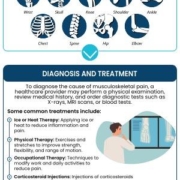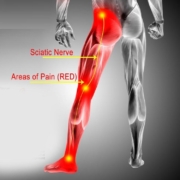5 Essential Questions to Ask Your Doctor About MSK Pain
Title: 5 Essential Questions to Ask Your Doctor About MSK Pain
When it comes to musculoskeletal (MSK) pain, navigating the complexities of your health can feel overwhelming. Whether it’s a persistent ache in your back, a sudden twinge in your knee, or a dull throb in your shoulders, understanding the root cause is crucial for effective treatment. In this listicle, we’ll explore five essential questions to ask your doctor that can empower you to take charge of your health journey. By delving into these inquiries, you’ll gain valuable insights into your condition, potential treatment options, and strategies for pain management. Equip yourself with knowledge and confidence as we uncover the answers that can lead to a more informed and proactive approach to your MSK pain.
1) What could be causing my musculoskeletal pain, and how can we determine the exact source? Understanding the root cause of your pain is crucial for effective treatment
Musculoskeletal pain can arise from a variety of sources, making it essential to identify the underlying cause for effective treatment. Factors that may contribute to your discomfort include:
- Injuries: Sprains, strains, or fractures can lead to acute pain.
- Chronic Conditions: Arthritis, fibromyalgia, and other long-term illnesses may cause persistent discomfort.
- Posture and Ergonomics: Poor posture or improper workstation setup can result in muscle tension and pain.
- Overuse: Repetitive motions in sports or daily activities can lead to overuse injuries.
- Medical Conditions: Conditions like osteoporosis or infections can also manifest as musculoskeletal pain.
To pinpoint the exact source of your pain, a comprehensive approach is necessary. Your doctor may recommend:
| Assessment Method | Description |
|---|---|
| Physical Examination | Assessing range of motion, tenderness, and swelling. |
| Imaging Tests | X-rays, MRIs, or CT scans to visualize internal structures. |
| Blood Tests | Checking for markers of inflammation or infection. |
| Patient History | Discussing previous injuries, lifestyle, and symptoms. |
By utilizing these methods, your healthcare provider can develop a clearer picture of your condition, allowing for tailored treatment strategies that address the root cause of your pain.
2) What treatment options are available for my specific condition, and what are their potential benefits and risks? Knowing the various pathways for relief can empower you to make informed decisions about your care
Understanding the treatment options available for your musculoskeletal (MSK) pain is crucial for tailoring a management plan that suits your specific needs. Common treatment pathways include:
- Physical Therapy: A personalized exercise regimen can improve mobility and strengthen the surrounding muscles, reducing pain over time.
- Medications: Nonsteroidal anti-inflammatory drugs (NSAIDs) or corticosteroids can provide immediate relief, but long-term use may lead to side effects such as gastrointestinal issues or dependency.
- Injections: Corticosteroid or hyaluronic acid injections can offer targeted relief, though they may not be suitable for everyone and can carry risks of infection.
- Surgery: In severe cases, surgical interventions can provide lasting relief but come with inherent risks, including complications and recovery time.
Each treatment option has its own set of potential benefits and risks. To help you weigh these factors, consider the following table:
| Treatment Option | Benefits | Risks |
|---|---|---|
| Physical Therapy | Improved strength and flexibility | Time commitment required |
| Medications | Quick pain relief | Potential side effects |
| Injections | Targeted pain relief | Risk of infection |
| Surgery | Long-term relief | Recovery time and complications |
By discussing these options with your healthcare provider, you can gain insights into which treatment may be the most effective for your condition, allowing you to make informed decisions about your care journey.
3) How can I manage my pain at home, and what lifestyle changes should I consider? Your doctor can provide tailored advice on exercises, diet, and other modifications to help alleviate your discomfort
Managing pain at home requires a proactive approach that combines various strategies to enhance your quality of life. Start by incorporating gentle exercises into your daily routine, as recommended by your doctor. Activities like yoga, stretching, and swimming can improve flexibility and reduce stiffness. Additionally, consider implementing heat and cold therapy; using a heating pad or ice pack can provide immediate relief and help manage inflammation. Don’t underestimate the power of mindfulness and relaxation techniques, such as meditation or deep-breathing exercises, which can significantly lower pain perception and promote emotional well-being.
In terms of lifestyle changes, a balanced diet plays a crucial role in managing musculoskeletal pain. Focus on incorporating anti-inflammatory foods such as fatty fish, leafy greens, nuts, and berries into your meals. Staying hydrated is equally important, as dehydration can exacerbate discomfort. Furthermore, prioritize adequate sleep and establish a consistent sleep schedule to support your body’s healing processes. Below is a simple table summarizing key lifestyle changes to consider:
| Change | Description |
|---|---|
| Exercise | Incorporate gentle activities like yoga and swimming. |
| Diet | Focus on anti-inflammatory foods and stay hydrated. |
| Sleep | Establish a consistent sleep schedule for recovery. |
| Mindfulness | Practice relaxation techniques to manage pain perception. |
4) Are there any red flags or symptoms I should watch for that might indicate a more serious issue? Being aware of warning signs can help you seek prompt medical attention if your condition worsens
Being vigilant about your health is essential, especially when dealing with musculoskeletal (MSK) pain. Certain red flags may indicate that your condition is more serious than initially thought. If you experience any of the following symptoms, it’s crucial to consult your healthcare provider promptly:
- Persistent Pain: Pain that lasts longer than a few weeks or worsens over time.
- Unexplained Weight Loss: Sudden weight loss without changes in diet or exercise.
- Loss of Function: Difficulty performing daily activities or a noticeable decrease in strength.
- Numbness or Tingling: Sensations that travel down your arms or legs, especially if they affect your ability to move.
- Fever or Chills: Accompanying symptoms that may suggest an underlying infection.
Additionally, it’s important to monitor any changes in your symptoms. Keep an eye out for the following warning signs:
| Symptom | Action |
|---|---|
| Severe Headaches | Seek immediate medical attention. |
| Joint Swelling | Consult a doctor for potential arthritis. |
| Changes in Bowel or Bladder Control | Discuss with your healthcare provider. |
| Visible Deformities | Get evaluated for fractures or dislocations. |
Recognizing these signs early can lead to timely interventions, potentially preventing complications and improving your overall quality of life. Always trust your instincts—if something feels off, don’t hesitate to reach out for help.
5) How often should I schedule follow-up appointments to monitor my progress? Regular check-ins are essential for adjusting treatment plans and ensuring your recovery stays on track
Regular follow-up appointments play a crucial role in managing musculoskeletal (MSK) pain effectively. These check-ins allow you and your healthcare provider to assess your progress, discuss any changes in your symptoms, and make necessary adjustments to your treatment plan. Depending on the severity of your condition and the type of treatment you’re undergoing, the frequency of these appointments can vary. Generally, it’s advisable to schedule follow-ups every 4 to 6 weeks during the initial stages of treatment. This timeline helps ensure that any issues are identified and addressed promptly.
As your condition stabilizes, you may transition to less frequent appointments, such as every 2 to 3 months. However, this can differ based on individual circumstances, including your response to treatment and any new symptoms that may arise. Here’s a simple table to help visualize a potential follow-up schedule:
| Phase of Treatment | Recommended Follow-Up Frequency |
|---|---|
| Initial Phase | Every 4 to 6 weeks |
| Stabilization Phase | Every 2 to 3 months |
| Maintenance Phase | Every 6 months |
Additionally, it’s important to communicate openly with your healthcare provider about any concerns or changes in your condition between scheduled appointments. If you experience a flare-up or new symptoms, don’t hesitate to reach out for an earlier consultation. This proactive approach not only helps in adjusting your treatment plan but also empowers you to take an active role in your recovery journey.
Insights and Conclusions
As we wrap up our exploration of the essential questions to ask your doctor about musculoskeletal (MSK) pain, it’s important to remember that your health journey is a collaborative effort. Open communication with your healthcare provider can pave the way for effective diagnosis, treatment, and management of your pain. By asking the right questions, you empower yourself to take an active role in your care and ensure that your concerns are addressed.
Whether you’re experiencing chronic discomfort or a recent injury, being informed is your best ally. So, the next time you find yourself in the doctor’s office, keep these questions in mind. They can lead to deeper insights, tailored treatment options, and ultimately, a path toward relief and recovery. Your well-being matters, and with the right dialogue, you can navigate the complexities of MSK pain with confidence. Thank you for joining us on this journey toward better health—here’s to a future filled with movement and vitality!










Leave a Reply
Want to join the discussion?Feel free to contribute!